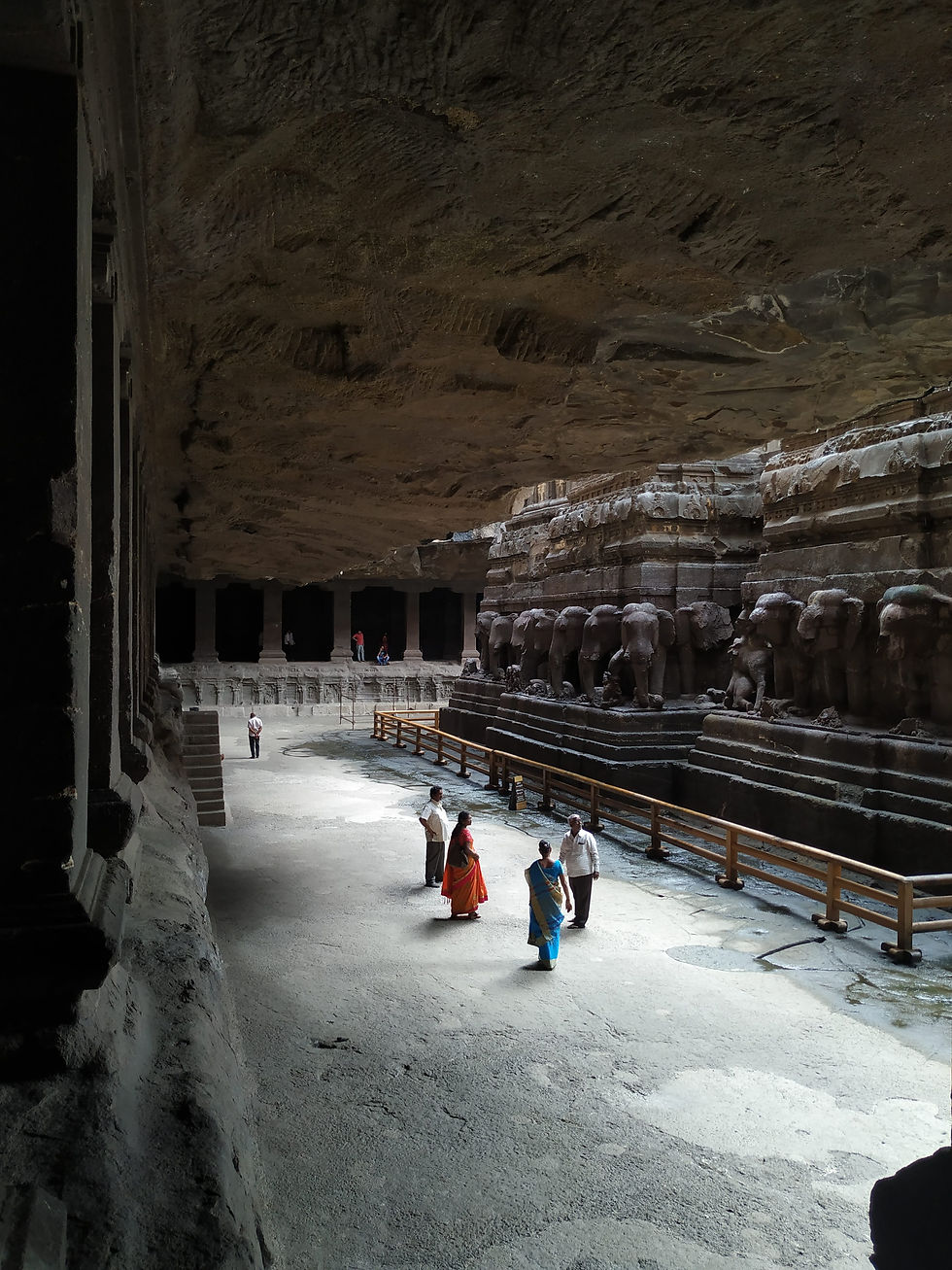The Symbolism of the Kailāśanātha Temple, Ellora
- Anirudh Kanisetti

- Jul 6, 2020
- 2 min read
Light, Space, Meaning

The Kailāśanātha temple, a monolith 4/5 the height of the Leaning Tower of Pisa, the size of a football field, was carved from a single rock in the late 8th century.
I want to draw your attention to one aspect of its design in this post: namely, the enormous sense of space that has been created by excavating a cliff. You would expect it to be all dark and cramped at the bottom - but the sensory experience is the exact opposite.
How did its architect do this?
He raised the plinth, and gave the temple two storeys - thus elevating its pinnacles into the light and air, while allowing light and air to go all the way to the ground.

Galleries around the base (image 2) artificially increase the amount of space in the courtyard and allow you to stare at the colossal elephants on the plinth, erupting from the black rock locked in combat with lions. You can tell from their moving trunks and shaking heads and ears that the sculptors actually used fighting elephants as models (image 3).

There is also a more subtle philosophical meaning attached to the temple's design. In sāmkhya philosophy, the universe emerged from the interaction of two elements: puruṣa, spirit, sky, the Male; and prakṛti, nature, earth, the Female. Another way of interpreting the experience of standing in its courtyard (image 1) is that you are embraced by the raw earth on your left, you stare into a window of the sky in front of you, and on your right, you see the perfected manifestation of their interaction: the great temple itself, emanating out of the primeval rock like the universe emanated from the cosmic egg.

And what would be a more appropriate representation of the unity of Male and Female than what lies at the very heart of this earth, hidden away deep in the rock, but the liṅga, the phallus which represents Śiva himself, embedded in the yoṇi, the sacred genitalia of the Mother Goddess?



Comentários